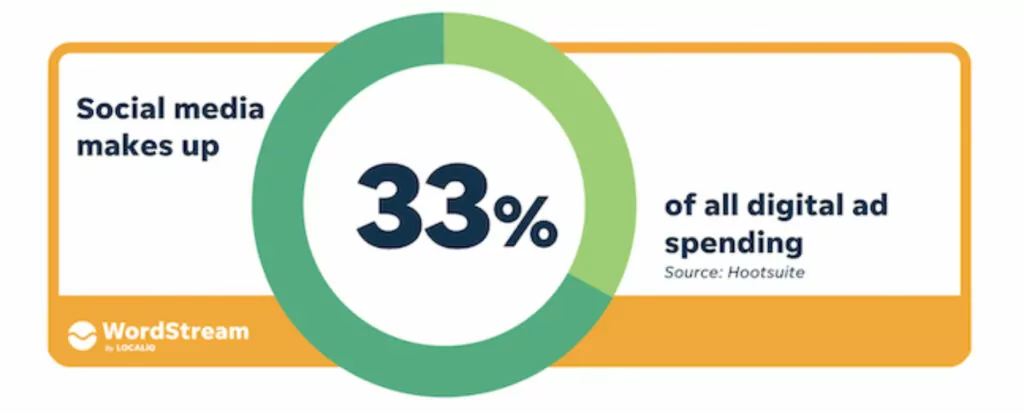When investing thousands of dollars into your advertising, you want to ensure that every cent counts. How do you know you’re using the best channels and strategies for reaching and converting your audience? When you optimize ad spend, you invest your budget where it makes the most impact and generates the best results.
Learn seven strategies for ad spend optimization and start surpassing your advertising goals.
Key Takeaways:
- Optimizing your ad spend by changing your strategies to get the most return from your investment
- Establish goals and metrics to use so you have a consistent way to measure your success
- Automating your processes keeps you updated in real-time on your ad results to ensure you always make the best investments
How to Know You Optimized Your Ad Spend
Optimization isn’t a one-time strategy that you perform, then sit back and watch your sales soar. Instead, it requires ongoing evaluation and adjustments that keep your ad spend focused on the most effective channels and latest consumer behaviors.
To effectively adjust your ad spend, you must establish metrics for measuring your campaigns’ success. These metrics will help you establish your ROAS or return on ad spend. You can calculate your ROAS by subtracting what you spent on advertising from what you gained.
However, sometimes your advertising return isn’t in sales. It can also be quality leads, increased awareness, and successful lead nurturing. These results are just as valuable as sales because they lead to more loyal customers and a more positive customer experience. About 45.9% of businesses say customer experience is their top priority over the next five years.
Source: TechTarget
7 Tips to Optimize Ad Spend and See Greater ROAS
Use these seven tips to consistently generate a high ROAS by choosing the most effective ad strategies.
1. Start with Data
About 64% of marketing leaders strongly agree that a data-driven strategy is essential for success. The most valuable type of data is first-party data, which is information you collect directly from your company, customers, and employees.
You use data to find patterns that highlight what strategies are successful and can help you identify issues in your advertising strategies.
Some data you need to collect to help you optimize your ad spend includes:
- Customer demographic information
- Ad performance data
- Intent data
- Sales reports
- Behavioral data
- A/B testing results
2. Establish Ad Goals
Your ad goals tell you what your measure of success is. They are benchmarks you establish to compare your results to and metrics you plan to use for consistently measuring your results across several digital channels.
For example, your advertising goal might be a specific number of quality leads you want to generate. You can compare the number of leads you generate from each ad campaign and channel and move your budget to focus on the channels that yield the most leads.
3. Segment Your Market
If you try to reach everyone, you’ll fail to reach anyone effectively. Often you must spend more to earn more.
Customers are drastically different from each other. You have customers who want your products but aren’t sure they want to spend the money. You also have those who have no issues with finances but aren’t sure they want your product. Both groups need very different ads to convince them to purchase from you.
Segmentation and targeting groups your buyers according to their needs, location, industry, point in the marketing funnel, or other identifying factors. When you create ads, you target specific segmentations. Even though you will spend more to run several campaigns at once, you will also see more sales because you’re targeting people by customizing your message for those unique groups.
4. Strategically Bid
Ad costs can vary. Many ad platforms require bidding, including sponsored searches and social media. The amount you bid has to be high enough to outperform your competition but low enough to yield positive returns.
For example, your keyword research will tell how often consumers search phrases in your industry. Choosing low-hanging fruit means targeting words with a high search volume but low competition. These are often long-tail keywords, which are search phrases with several terms. Because they are so specific, there are more of these search terms, and not as many businesses bid on them, yet they still bring in traffic.
5. Pair Your Ad Campaign with Organic Campaigns
About 89% of marketers use organic search to distribute their content. Social media is a close second with 87%, and email marketing comes in third with 72% of marketers using it for distribution.
Organic marketing is popular because it requires minimal investment without an expiration on your return. For example, after you create a blog post, you can still see leads come in from it years after publishing it without making any additional investment.
Visibility is where organic media falls short. The internet has abundant content, so getting your organic content to appear on consumers’ social media feeds or searches isn’t easy. However, paid ads can reduce noise and move your content to the top to generate traffic.
Paid and organic marketing strategies work together. If you only use paid techniques, you will not be optimizing your spending and will overpay for results you can get from organic methods. However, if you only use organic methods, you won’t reach your entire audience. Instead, you can use paid ads to drive traffic and generate leads at strategic times.
For example, holidays, new product launches, and low traffic periods are all ideal times to invest in paid ads to boost your business.
6. Use Multiple Platforms and Formats
Customers rarely stick to one platform or media format. Instead, they constantly move from one online location to the next because everything is interconnected. For example, consumers might start on social media and click on an ad that takes them to a website where they watch a video embedded on YouTube.
Because of the interconnectivity of the internet, your ads should offer a seamless browsing experience. You’ll miss those potential touchpoints if you only invest in one channel.
Some of the most popular formats and channels for paid digital ads include:
- Social media ads
- Influencer marketing
- Sponsored searches
- Native ads
- Video ads
Social media is the most popular platform for paid ads, with 87% of marketers using the platform in their campaigns.
Source: Wordstream
7. Automate Your Optimization
Customer behavior is rapidly evolving. You figure out what resonates with your audience just for them to change again. Thankfully, you don’t have to spend hours each day researching the latest customer trends.
Automation continually tracks and analyzes customer data to help you stay on top of consumer trends. It keeps you updated in real-time as it collects data from your ad performance, website traffic, and business sales.
Use marketing automation to monitor your ad spend and results. Then, use those results to continually optimize your strategies.
Automate Your Lead Management
Optimizing your ad spend starts with automating your customer’s journey. MXTR helps you track your leads and monitor their behavior, so you can maximize the return from your ad campaigns.
Schedule a demo to learn more about our marketing automation platform.
Featured Image: istockphoto









